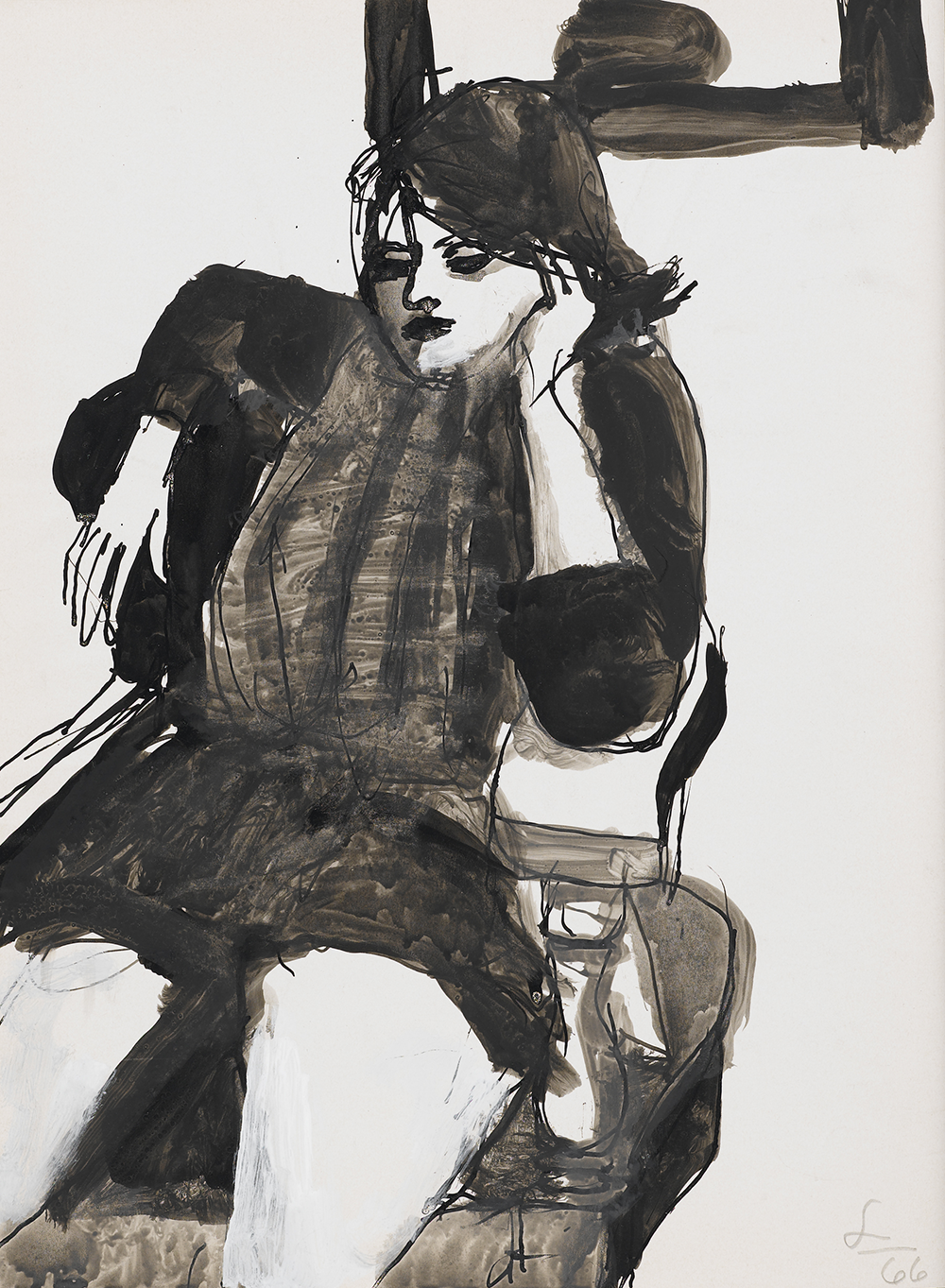“Alternate Realities” at the Norton Simon Museum presents the work of four California painters from the mid-20th century: John Altoon, Richard Diebenkorn, Frank Lobdell and Emerson Woelffer. These artists formed part of the California version of Abstract Expressionism, a New York-based movement that had connections to art in other locations. While similarities to the New York painters abound, it is really the differences that stand out in this exhibition. The work of the west coast painters is characterized by a lightness, lyricism and playfulness that is often not evident in their New York counterparts.
Nowhere is this more evident than in the work of John Altoon, who in many ways is the star of the show. Known for his large gesture paintings, particularly from the “Ocean Park” series, Altoon was a consummate draftsman, able to support himself through illustration, and his prodigious drawing skills can be seen in the many arresting works on paper in the exhibition. Jim’s Fancy (1966), a wacky, spirited work in airbrushed watercolor and ink, conjures the bright light of SoCal, as well as links to surrealist automatic drawings.
Richard Diebenkorn, who like Altoon was a very accomplished draftsman, is represented by two large oil paintings, but it is the small sketchbook paintings that are such a delight in this show.

Richard Diebenkorn (American, 1922–1993), Untitled #5, c. 1950. Courtesy Norton Simon Museum, Gift of Mr. and Mrs. Paul Kantor © Richard Diebenkorn Foundation
A myriad of unbound sketchbook pages are shown in frames and on pedestals in sheets of plexi; the formal inventiveness and extemporaneous nature of the small works makes for a compelling compendium that benefits from being able to be seen as a group.
Sharing the center gallery with Diebenkorn, Frank Lobdell is the most “controlled” expressionist in the group. Lobdell’s work, represented mainly by lithographs and one large canvas, seems somewhat against the grain of the more spontaneous work of the other artists. Yet the processes evident in the surfaces of the finished prints betray an interest in the “life of the artwork” aspect in common with the other artists.
Lastly, Emerson Woelffer shines as perhaps the most contemporary looking artist in the show. Also represented mainly by prints, Woelffer’s comparatively minimalist works have more in common with the work of Ellsworth Kelly than with the gestures and mark makings of the Abstract Expressionists. The flatness, simplicity and even the seemingly torn edges also suggest the late work of Henri Matisse, surely a strong influence on all the artists exhibited.
The exhibition was organized by Chief Curator Emily Talbot, who makes the pertinent point that these artists did not completely reject figuration for abstraction but “instead they forged a productive dialogue between the two modes.” Despite the prevailing formalist rhetoric about “pure” painting from the 1950s and ’60s, this dialogue seems to have produced some of the most enduring art of the period, as evidenced by this handsome exhibition.


